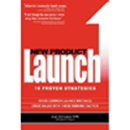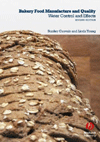Two studies indicate that overfolating more than likely comes from the overconsumption of folate supplements instead of enriched foods found in everyday diets, which is good news for the baking industry.
Some critics have questions concerning whether enriching everyday foods such as white bread and ready-to-eat cereal with folic acid can lead to too much of the Vitamin B nutrient. However, two studies published in the most recent edition of theAmerican Journal of Clinical Nutritionseem to allay such fears. Rather, the studies indicate that overfolating, which could mask symptoms of anemia, more than likely comes from the overconsumption of folate supplements instead of enriched foods found in everyday diets.
That’s good news for the baking industry, which continues to promote white bread as one of the most economical and easiest sources for adding B vitamin folic acid to consumers’ everyday diets, says Judi Adams, president of the Grain Foods Foundation. According to the foundation, enriching flour with folic acid, which has been done since 1996, has been partly instrumental in preventing thousands of neural tube birth defects.
In fact, the foundation adds, not enough American women understand that consuming the B vitamin folic acid everyday can help prevent serious birth defects and that they should take it before they become pregnant. A recent March of Dimes survey revealed that only 28% of women of childbearing age knew folic acid can prevent birth defects and only 11% said they knew that folic acid should be consumed prior to pregnancy. If anything, Adams notes, bakers should be doing more to promote the consumption of white bread, especially for women of childbrearing age.
Additionally, there are other ways in which bakers can leverage folic acid in ways that have been approved by the Food & Drug Administration, says Lee Sanders, senior vice president, government relations and public affairs for the American Bakers Association.
“There is a great opportunity for bakers to promote these excellent benefits through the use of the FDA-approved folate health claims,” Sanders notes. “This tool is currently being underutilized, but would be a great way to broadly communicate this under-recognized health benefit.”
The studies in the American Journal of Clinical Nutrition were largely based on the National Health and Nutrition Examination Survey data from 2003-2006. In an editorial on “Getting Folic Acid Nutrition Right,” the journal notes the two studies document the demonstration of a “remarkable policy success story.” However, the journal cautions that there is need for additional mechanisms for updating the nation’s public health targets concerning the folate nutrition.
In January, as part of National Birth Defects Prevention Month, the Grain Foods Foundation once again has joined with the March of Dimes to remind all women of child-bearing age of the important role folic acid plays in preventing birth defects. Daily consumption of the B vitamin folic acid beginning before pregnancy is crucial as birth defects of the brain and spine known as neural tube defects such as spina bifida can occur in the early weeks following conception, often before a woman knows she is pregnant.
“Folic acid is the most important vitamin women can take to help prevent serious birth defects of the brain and spine, and it’s most important that they start taking it before they get pregnant and continue to take it after,” says Jennifer L. Howse, president of the March of Dimes.
The March of Dimes urges women of childbearing age to consume 400 micrograms of folic acid daily beginning before pregnancy and continuing into the early months of pregnancy. Bread, crackers, bagels, pasta, pretzels and tortillas made from fortified, enriched white flour are popular and important sources of folic acid. In fact, the Grain Foods Foundation notes that enriched grain products have been fortified with twice the amount of folic acid found in whole grain products.
“Enriched grains are an easy, inexpensive and delicious way for women to get essential vitamins such as folic acid,” Adams says.
Get our new eMagazine delivered to your inbox every month.
Stay in the know on the latest snack and bakery industry trends.
SUBSCRIBE TODAY!Copyright ©2024. All Rights Reserved BNP Media.
Design, CMS, Hosting & Web Development :: ePublishing




